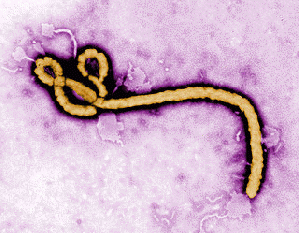Go to full-article at source
In my previous
post on the Ebola outbreak, I focused on how the treatment of Ebola patients highlights the shortcomings of private healthcare in the US, and the need for a comprehensive public system. I also mentioned that American media coverage has been limited, as we might expect, to a spectrum running from Republican/Fox fear-mongering to Democratic/MSNBC ass-covering. I avoided, and had formed no opinion about, the question of how dangerous this strain of Ebola is, or of any question about what preventive measures are called for.
Since that post, the subsequent brouhahas about who should and shouldn't be quarantined have only exacerbated the ridiculous media paradigm in which what's really at stake in Ebola is Obama's presidential reputation or Chris Christie's presidential prospects or which party will win the mid-term elections. At the same time, a lot of evidence has become available regarding the lethality and transmissibility of the Ebola strain we are dealing with. In this post, I want to look at some of that evidence, teasing out the issues of scientific knowledge and ethico-political authority that are raised by the Ebola crisis, and which are confused by the impulse to read them through the lens of American liberal/conservative categories, with which they have nothing to do.
Superbug
How lethal and how transmissible is the current (Zaire) strain of the Ebola virus?
Here's a two-minute clip of Dr. Michael Osterholm, head of the Center for Infectious Disease Research and Policy at the University of Minnesota, speaking at Johns Hopkins:
And here's Peter Jahrling, chief scientist at the National Institute of Allergy and Infectious Diseases, who's been studying hemorrhagic fevers for 25 years, and helped discover the Reston strain of Ebola, in an interview with Vox:
We are using tests now that [we] weren't using in the past, but there seems to be a belief that the virus load is higher in these patients [today] than what we have seen before. If true, that's a very different bug. "
JB (Vox): A higher viral load means this Ebola virus can spread faster and further?
PJ: Yes. I have a field team in Monrovia. They are running [tests]. They are telling me that viral loads are coming up very quickly and really high, higher than they are used to seeing.
As Vox points out (using statistics that have already been surpassed), the current Ebola outbreak is "remarkable" because "the virus has spread to six countries in Africa plus America, and has already infected more than 13,000 people. It has killed nearly 5,000 people. That is more than six times the sum total of all previous outbreaks combined." It has a 50-70% mortality rate.
In short, unprecedented lethality:
Catch As Catch Can
Regarding the transmissibility of the present Ebola strain, Lisa M. Brosseau and Rachael Jones, professors in the School of Public Health at the University of Illinois at Chicago, have written, in a
report for the Center for Infectious Disease Research and Policy (that they have taken pains to say "does not represent the opinion of the University of Illinois at Chicago or any other organization"), that: "Being at first skeptical that Ebola virus could be an aerosol-transmissible disease, we are now persuaded by a review of experimental and epidemiologic data that this might be an important feature of disease transmission, particularly in healthcare settings."
Echoing a point that Dr. Osterholm made in a New York Times op-ed in September, Brosseau and Jones point out that: "Zaire Ebola viruses have also been transmitted in the absence of direct contact among pigs and from pigs to non-human primates, which experienced lung involvement in infection. Persons with no known direct contact with Ebola virus disease patients or their bodily fluids have become infected." Thus, they find "scientific and epidemiologic evidence that Ebola virus has the potential to be transmitted via infectious aerosol particles both near and at a distance from infected patients."
Given all this, and given, as they point out, that this Ebola virus has "No proven pre- or post-exposure treatment modalities, a high case-fatality rate, [and] unclear modes of transmission," Brosseau and Jones insist that the use of respiratory protection--for healthcare workers, at the least--is "compelled" by the well-established "precautionary principle--that any action designed to reduce risk should not await scientific certainty."
Not only is Ebola incredibly lethal and potentially airborne, it can, according to a
Lancet study reported in the
New York Times in 2000 "infect without producing illness," and can "persist in the blood of asymptomatic infected individuals for two weeks after they were first exposed to an infected individual." In other words, "people can be carriers without showing symptoms." One
study done by the New England Journal of Medicine and the World Health Organization found that "nearly 13 percent of the time, those infected with Ebola exhibited no fever at all."
Let's have
Dr. Bruce Beutler, who won the Nobel Prize for Medicine and Physiology in 2011, sum it up:
It may not be absolutely true that those without symptoms can't transmit the disease"It could be people develop significant viremia [where viruses enter the bloodstream and gain access to the rest of the body], and become able to transmit the disease before they have a fever, even. People may have said that without symptoms you can't transmit Ebola. I'm not sure about that being 100 percent true. There's a lot of variation with viruses.
Read the rest of this article here







